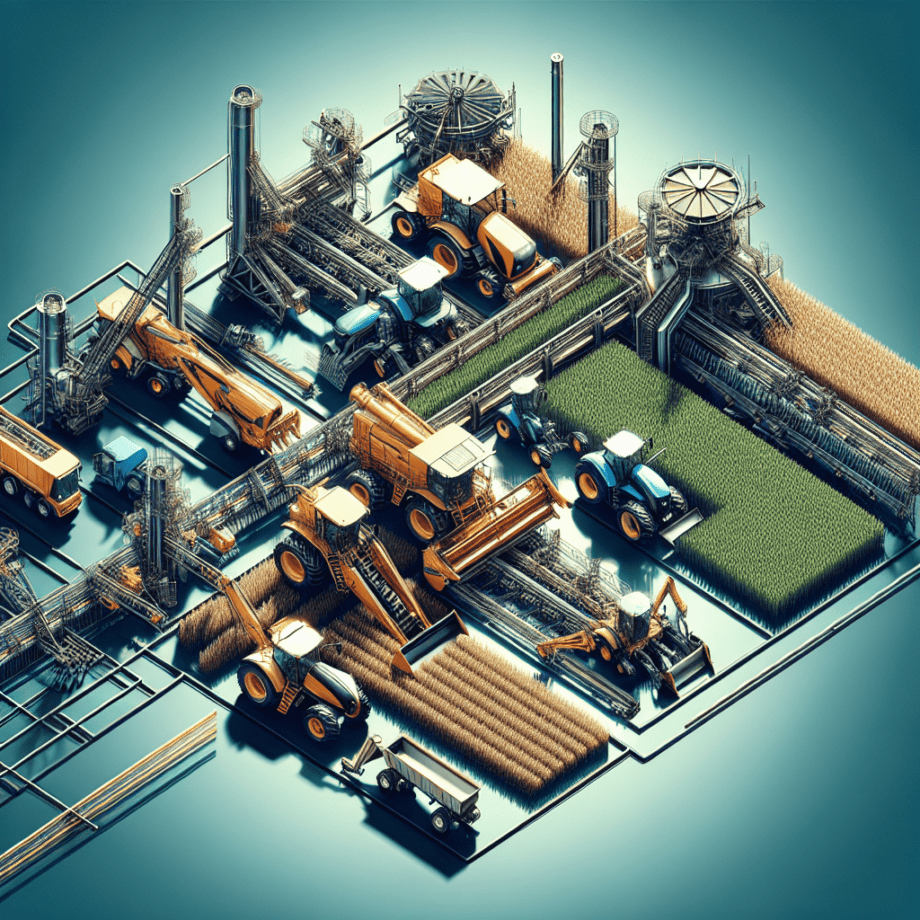Agricultural machinery has revolutionized the way farming is conducted, making it more efficient and productive. This article provides an overview of different types of agricultural machinery, highlighting their functions and importance in modern agriculture.
Tractors
Tractors are the backbone of modern agriculture, serving as the primary power source for a variety of tasks. They are versatile machines that can be equipped with different attachments to perform a wide range of functions, from plowing and tilling to planting and harvesting.
Types of Tractors
There are several types of tractors, each designed for specific tasks:
- Utility Tractors: These are general-purpose tractors used for a variety of tasks, including plowing, hauling, and mowing.
- Row Crop Tractors: Designed for row crop farming, these tractors have adjustable wheel spacing to accommodate different crop rows.
- Orchard Tractors: These tractors are designed for use in orchards and vineyards, featuring a narrow design to navigate between trees and vines.
- Compact Tractors: Smaller in size, these tractors are ideal for small farms and gardens.
Plows
Plows are essential for preparing the soil for planting. They break up the soil, turning it over to bury crop residues and weeds, and create a smooth seedbed.
Types of Plows
Different types of plows are used depending on the soil type and farming requirements:
- Moldboard Plows: These plows have a curved blade that turns the soil over completely, burying weeds and crop residues.
- Chisel Plows: Designed for minimal soil disturbance, chisel plows break up the soil without turning it over completely.
- Disc Plows: Featuring concave discs, these plows are effective in cutting through tough soil and crop residues.
Seeders and Planters
Seeders and planters are used to sow seeds in the soil. They ensure that seeds are planted at the correct depth and spacing, which is crucial for optimal crop growth.
Types of Seeders and Planters
There are various types of seeders and planters, each suited for different crops and planting methods:
- Broadcast Seeders: These machines scatter seeds evenly over the soil surface, ideal for crops like grass and small grains.
- Row Crop Planters: Designed for row crops, these planters place seeds in precise rows at specific intervals.
- Air Seeders: Using air pressure, these seeders distribute seeds evenly across the field, suitable for large-scale farming.
Harvesters
Harvesters are used to gather mature crops from the fields. They are designed to efficiently separate the edible parts of the crop from the non-edible parts.
Types of Harvesters
Different types of harvesters are used for various crops:
- Combine Harvesters: These versatile machines can harvest, thresh, and clean grain crops like wheat, corn, and soybeans in a single operation.
- Forage Harvesters: Used for harvesting forage crops like grass and corn silage, these machines chop the crop into small pieces for easier storage and feeding.
- Potato Harvesters: Specifically designed for harvesting potatoes, these machines dig up the tubers and separate them from the soil and plant material.
Sprayers
Sprayers are used to apply pesticides, herbicides, and fertilizers to crops. They ensure that these substances are distributed evenly and efficiently, helping to protect crops from pests and diseases and promote healthy growth.
Types of Sprayers
There are several types of sprayers, each suited for different applications:
- Boom Sprayers: These sprayers have long arms (booms) that extend out to cover a wide area, ideal for large fields.
- Airblast Sprayers: Using a powerful fan, these sprayers create a fine mist that can penetrate dense foliage, making them suitable for orchards and vineyards.
- Handheld Sprayers: Portable and easy to use, these sprayers are ideal for small-scale applications and spot treatments.
Balers
Balers are used to compress and package hay, straw, and other crop residues into compact bales for easier handling, storage, and transportation.
Types of Balers
Different types of balers are used depending on the type of material being baled and the desired bale size and shape:
- Square Balers: These balers produce rectangular bales that are easy to stack and transport.
- Round Balers: Producing cylindrical bales, these balers are efficient and can handle large volumes of material.
- Silage Balers: Designed for baling silage, these balers wrap the bales in plastic to preserve the forage for later use.
Conclusion
Agricultural machinery plays a crucial role in modern farming, enhancing productivity and efficiency. From tractors and plows to harvesters and sprayers, each type of machinery has its unique functions and benefits. Understanding the different types of agricultural machinery and their applications can help farmers make informed decisions and optimize their farming operations.
